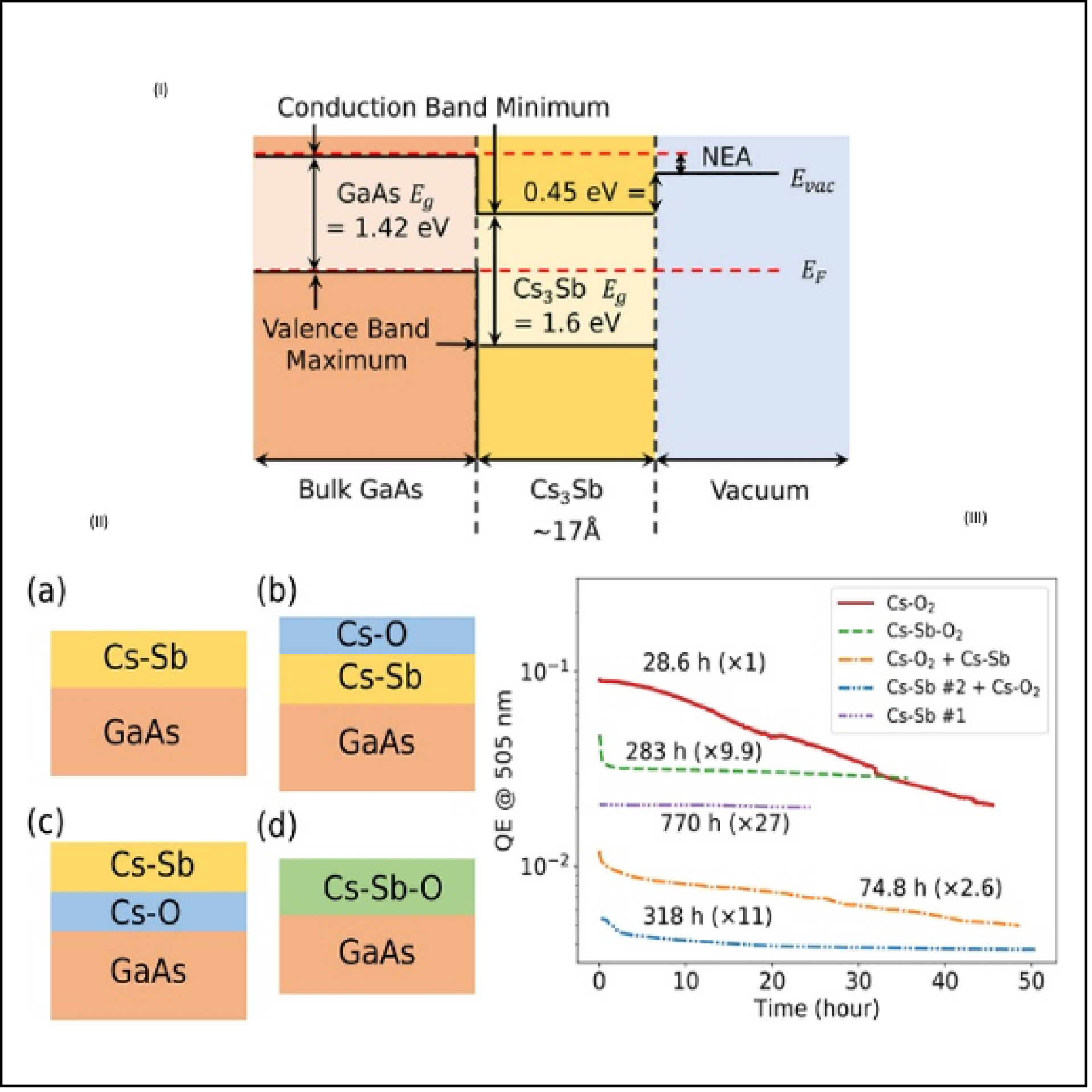Improved lifetime for GaAs based photocathodes
Negative Electron Affinity (NEA) activated surfaces are required to extract electron beams from GaAs-based photocathodes when illuminated with visible light. The NEA surfaces suffer from extreme sensitivity to poor vacuum conditions resulting in their rapid degradation and lowering of quantum efficiency. Due to this issue, the use of GaAs has been so far limited to DC guns that can offer the extreme high vacuum required to achieve some limited lifetime (~days) but which operate at very low electric fields (few MV/m). We report on series of unconventional NEA activations on surfaces of bulk GaAs with Cs, Sb, and O2 using different methods of oxygen exposure for optimizing photocathode performance. One order of magnitude improvement in lifetime with respect to the standard Cs-O2 activation is achieved without significant loss on quantum efficiency by co-depositing Cs, Sb, and O2.
Applications and Relation to CBB Goals:
GaAs is a high brightness photocathode material but suffers from extreme vacuum sensitivity, and this limits its application in high brightness photoinjectors. This work opens possibility to drastically increase the durability of GaAs-based photocathodes and to use GaAs-based photocathodes in high brightness photoinjectors.
Reference:
J. K. Bae, A. Galdi, L. Cultrera, F. Ikponmwen, J. Maxson, and I. Bazarov, “Improved lifetime of a high spin polarization superlattice photocathode,” Journal of Applied Physics, vol. 127, no. 12, p. 124901, Mar. 2020, doi: 10.1063/1.5139674. Available [Online] https://doi.org/10.1063/1.5139674

